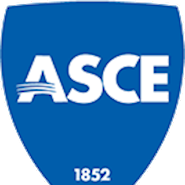ASCE’s most widely used standard has a newly released supplement.
ASCE/SEI 7-22: Minimum Design Loads and Associated Criteria for Buildings and Other Structures has been updated with new flood load provisions that protect against 500-year flood events – a significant improvement over the 100-year flood hazard referenced in the previous edition.
Supplement 2 of ASCE/SEI 7-22 is available as a free download.
“ASCE continuously seeks to update its standards using the latest scientific and engineering knowledge, to assure the standards remain relevant to society’s needs and an appropriate basis for design and construction,” said Ronald Hamburger, P.E., S.E., F.SEI, senior principal with Simpson Gumpertz & Heger Inc., and chair of the ASCE 7-22 Committee.
“Proper implementation of the supplement to ASCE 7-22’s Chapter 5 is a dramatic change to the current standard but will help residents and businesses feel secure despite weather-driven challenges.”
The primary technical updates relative to climate effects include a new requirement tying flood hazard mitigation design to risk category, which is consistent with other environmental hazards in ASCE 7. There are four categories from which a building designer can select based on the intended use of the structure, ranging from the least risk to human life in the event of failure in Risk Category I structures to the greatest risk to human life in the event of failure in Risk Category IV structures.
The new provisions require Risk Category II structures and above to use the 500-year floodplain to determine flood loads. The most commonly used category, Risk Category II structures include one- and two-family buildings, low- to medium-occupancy businesses, or recreational facilities. Risk Category I structures, including agricultural buildings such as barns and sheds, can still follow 100-year flood provisions.
The change in approach, along with revised loading equations, is a significant departure from previous versions of ASCE 7 and comes as part of a drive by the Society to increasingly integrate climate data in its standards.
The supplement also introduces a new requirement for relative sea-level change as it relates to each individual structure. The sea-level rise estimated over the service life of the structure must be added to the design’s flood mitigation plans.
“For more than 30 years, the ASCE 7 standard has been the authoritative source for the specification of minimum design loads and related criteria in the civil engineering community,” said ASCE Executive Director Tom Smith.
“To ensure structures continue to be safe for the public, it is imperative that the standards we rely on are updated to account for emerging risks to the built environment. This supplement is the most significant change to the standard’s flood load provisions since the inception of ASCE 7 and will improve the safety and reliability of structures across the globe.”
Learn more and download Supplement 2 for Minimum Design Loads and Associated Criteria for Buildings and Other Structures.
Subscribe to the ASCE 7 Online digital platform.



